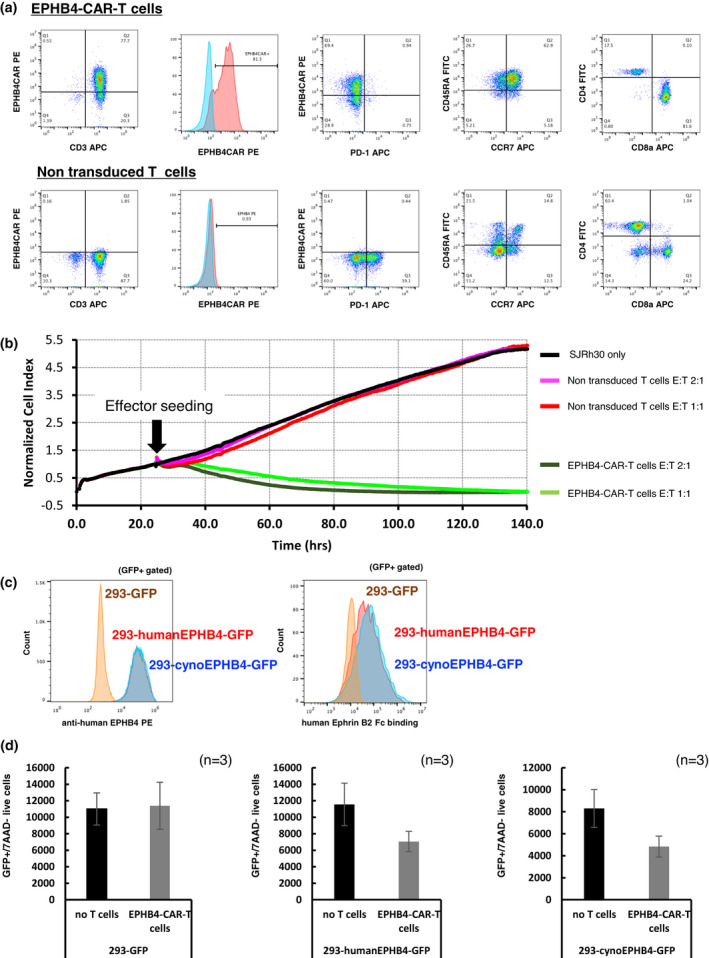Figure 3.

PB‐EPHB4‐CAR‐T cells recognised and killed both human and cynomolgus EPHB4‐expressing cells. (a) Phenotype and expression of PD‐1 in EPHB4‐CAR‐T cells and control T cells on day 14 after expansion. (b) Killing efficacy of PB‐EPHB4‐CAR‐T cells and control T cells obtained using the xCELLigence® real‐time cell analyser. Rh30 cells were co‐cultured with PB‐EPHB4‐CAR‐T cells or control T cells at E:T ratios of 1:1 and 2:1. The y‐axis showed normalised cell index, which represents the relative number of live tumor cells. (c) The binding capacity of human Ephrin B2‐Fc chimaera protein to human or cynomolgus EPHB4 molecule. (d) Killing efficacy of PB‐EPHB4‐CAR‐T cells on human or cynomolgus EPHB4‐expressing HEK293 cells. The number of live EPHB4‐expressing cells determined in the GFP‐positive/7AAD‐negative fraction was measured using flow cytometry 48 h after the co‐culture. The mean number of live cells in three different experiments is shown. Data were obtained from experiments conducted in triplicate.
